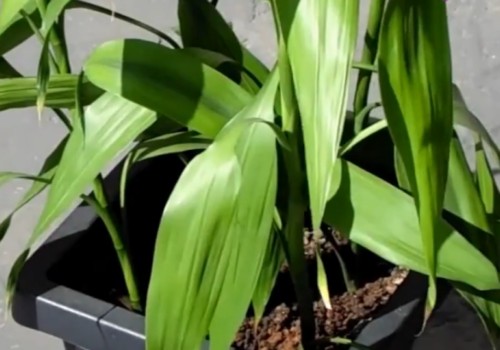Tips on raising rich bamboo by water
People who like home-raised green plants will not miss the rich bamboo. This kind of plant remains evergreen all the year round and has high ornamental value. At the same time, the implication of wealth and auspiciousness is also one of the reasons why many friends are attracted. Whether it is used for viewing or decorating the space, or purifying indoor air, it can have a very good effect.

Not only that, rich bamboo is also very suitable for family hydroponics, which can keep the indoor environment clean. But want to raise rich bamboo need to master certain skills, the following editor to share with you a little tips for raising rich bamboo.
If water raises rich bamboo, first of all, we need to find a transparent high-footed vase, so that it is easier for us to observe the growth of the root system and the changes of water quality. Then according to the size of the vase, the lower part of the trunk of Fugui bamboo will be truncated to facilitate water culture. The amount of water in the container should not be too much. Generally, the water level should be kept at the position of 1 stroke 3 at the lower part of the container.
It should be noted that it is generally recommended to use clean water to raise rich bamboo, not directly use the tap water just released. Because fresh tap water is mixed with substances such as chlorine because of disinfection and sterilization, it is not easy to feed rich bamboo if it is used directly. Therefore, if you really want to use tap water, you also need to prepare in advance and open it so that the chlorine in the water can be fully volatilized.
When cutting short the trunk of the rich bamboo, it is recommended that the lower cut be cut into a 45 °slope, which can increase the contact area between the base and water, which is more conducive to plant absorption of nutrients, thus rooting and growing faster. At the same time, if there are a few yellow leaves on the rich bamboo, it should also be cut off to avoid wasting nutrients and may spread to other healthy leaves.
After injecting clear water into the container, the original pruned rich bamboo can be inserted into it. At first, you can directly use clean water to raise, do not drop into the nutrient solution prematurely, otherwise it is easy to cause base rot. And the Prophase generally maintain 2-3 days to change water, wait for a period of time to take root, and then maintain 5-7 days to change water, while changing water can drop a few drops of nutrient solution. When the root system of the plant grows more and a large number of leaves grow, it can be kept for 10-15 days to change water.
It should be noted that if the leaves at the lower end of the plant trunk are easier to be immersed in water, they should be cut off in time. Because the leaves are easy to rot in the water, which destroys the water quality and produces bacteria or bacteria at the same time, so that the roots of the plant also rot, resulting in the failure of water culture.
However, in order to promote the rooting of rich bamboo, it is recommended that you smear some rooting agent on the base of the trunk before water insertion, or you can drop a few drops of rooting solution into the water. However, if you are dripping into the rooting liquid, you need to shake it well with the water in time so that it is fully dispersed in the water.
Fugui bamboo is more shady, but it also needs light for photosynthesis, so it is generally placed in a bright place of indoor ventilation to the sun, so that the plant can fully receive scattered light, so as to better maintain growth. If the light is too strong, shading measures should be taken in time, or it should be moved to a shady place for maintenance.
Some people like to turn on air-conditioning at home. If you put rich bamboo in an air-conditioned room, you must not let it face the air outlet, no matter cold air or hot air, it is disadvantageous to its growth. And after turning on the air conditioner, the indoor air tends to become drier, so it is necessary to spray water or spray into the space and leaves to moisturize, otherwise the leaves of rich bamboo will appear dry tip or yellow leaf phenomenon.
As for whether hydroponic rich bamboo needs fertilization, in fact, it generally does not need fertilization. at most, a few drops of special nutrient solution can be dropped into it when changing water, which is safe, clean and convenient to use. it can also play a certain role in promoting the growth of the plant.
Time: 2019-05-27 Click:
- Prev

How to raise rich bamboo in winter
Rich bamboo is not only suitable for viewing leaves, but also its implication is auspicious and beautiful, so many families are cultivated. However, it was originally well raised in spring, summer and autumn, but after winter, the plant is more prone to the phenomenon of yellow leaves, and even the possibility of death. Keep warm and protect against cold
- Next

The fastest way to take root of rich bamboo raised by water
Fugui bamboo is a kind of evergreen plant which is very suitable for water culture in indoor environment, but after buying it home for a period of time, many potted friends find that the plant either does not take root, or rotten roots soon after rooting, accompanied by yellow leaves at the same time. What's going on? In fact, it is relatively simple to cultivate rich bamboo in water.
Related
- Fuxing push coffee new agricultural production and marketing class: lack of small-scale processing plants
- Jujube rice field leisure farm deep ploughing Yilan for five years to create a space for organic food and play
- Nongyu Farm-A trial of organic papaya for brave women with advanced technology
- Four points for attention in the prevention and control of diseases and insect pests of edible fungi
- How to add nutrient solution to Edible Fungi
- Is there any good way to control edible fungus mites?
- Open Inoculation Technology of Edible Fungi
- Is there any clever way to use fertilizer for edible fungus in winter?
- What agents are used to kill the pathogens of edible fungi in the mushroom shed?
- Rapid drying of Edible Fungi

